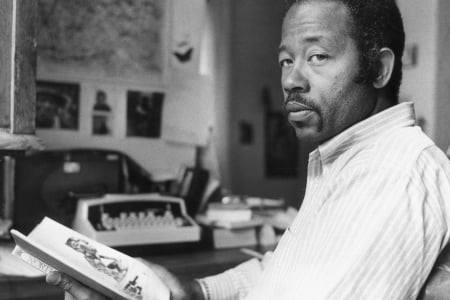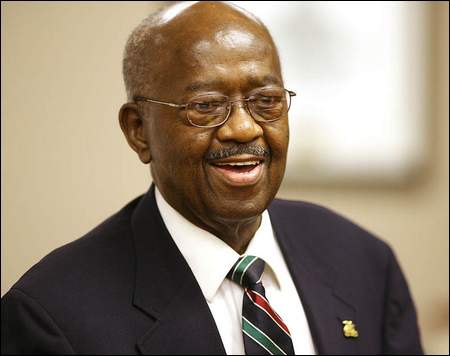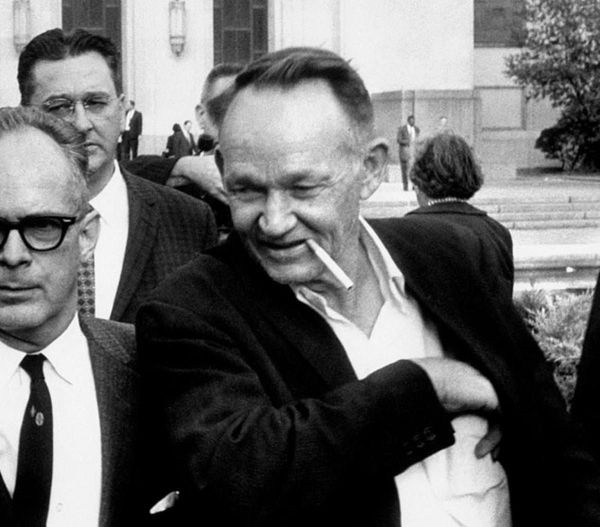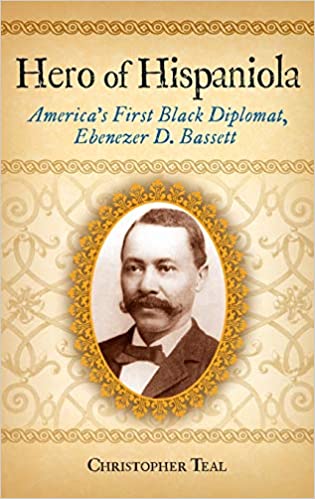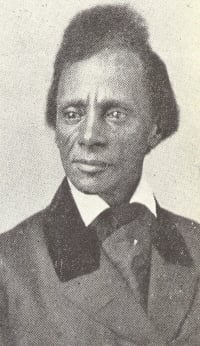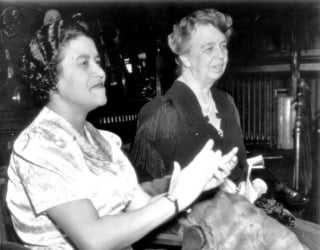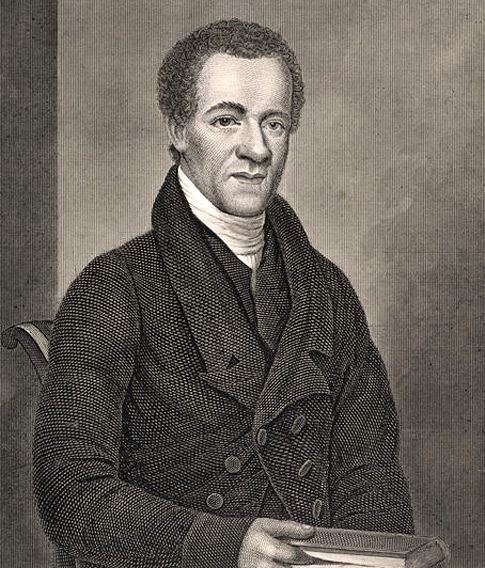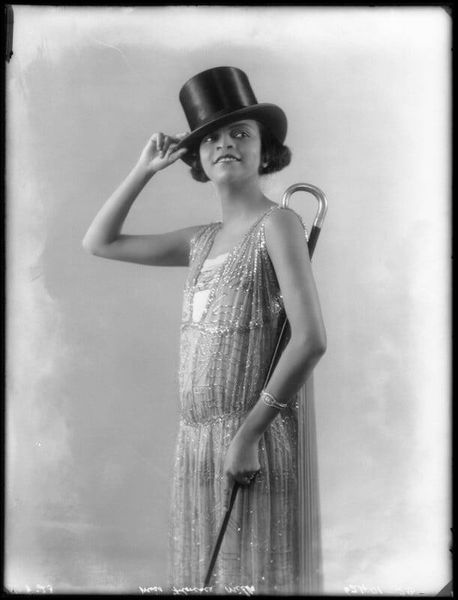GM – FBF – Today’s American Champion was an American pop and dance music singer. She was the lead singer of the Eurodance group La Bouche from 1994 to 2000, alongside American rapper Lane McCray. Their two most successful singles, “Be My Lover” and “Sweet Dreams”, were released in 1994 and 1995 respectively. After leaving the band, she began a solo career and found success primarily in European countries before her death in 2001. Her solo hits include “Love How You Love Me”, “Heartbeat” and “Wonderful Dream (Holidays are Coming)”.On the night of November 25, 2001, shortly after the final performance in Leipzig, she was among the twenty four passengers that were killed in the crash of Swiss airline’s Crossair Flight 3597 in Bassersdorf, Switzerland.Today in our History – November 25, 2001 – Melanie Janene Thornton (May 13, 1967 – November 25, 2001) dies.Thornton was born in Charleston, South Carolina and began studying voice from the age of six, as well as learning to play the piano and the clarinet. Inspired by singers whom she idolized and grew up listening to such as Aretha Franklin and Roberta Flack Thornton would mimic the female vocalists she watched on television and/or heard on radio. Later on she financed her college studies with appearances in talent shows and smaller band concerts. Throughout that period, she frequented a club called The Peacock Lounge, getting up and doing jam sessions when the live band invited people up to sing.She had long dreamed of a career in music and in February 1992, Thornton went to Germany. Her sister lived there with her U.S. Army husband and Thornton had dual citizenship in Germany and the United States. Her uncle, Bob Chisolm, a singer and piano player, encouraged her to give the German nightclub circuit a try.She had been singing in a Macon, Ga., band, Danger Zone, pulling down $50 on a good night. However, Bob Chisolm told her that on a bad night in Germany she would make $150. Thornton provided guest vocals for a lot of dance projects on their single releases, such as Orange Blue’s “If You Wanna Be (My Only)”, Comic’s “I Surrender to Your Love”, 100%’s “Power of the Light”, Trance-Vision’s “Take Me 2 Heaven 2 Nite” or Men Behind’s “Feel the life” and “How Can I.”Thornton tried it and soon found work in studios recording demos. It was her recording of the song “Sweet Dreams” that caught the attention of producer Frank Farian, the mastermind of the infamous 1980s duo Milli Vanilli. Farian took her under his wing, teaming her with rapper Lane McCray in the duo La Bouche, which is French for “The Mouth”. La Bouche went on to become one of the biggest Eurodance groups of the 1990s, with a string of hits, worldwide. They released two studio albums “Sweet Dreams” and “S.O.S.”, with “A Moment of Love” being the European version of “S.O.S.”, the remix album “All Mixed Up” followed by a string of hits like “Sweet Dreams (Ola Ola E)”, “Be My Lover”, “Fallin’ in Love”, “I Love to Love”, “Bolingo (Love is in the Air)”, “You Won’t Forget Me” or “S.O.S.” In February 2000, she would leave La Bouche to be replaced by Natascha Wright as the new front-woman. Next to La Bouche, Thornton continued providing guest vocals on singles such as Orange Blue’s “Sunshine of My Life” and “Runaway”, 100%’s “The Way It Is” and on Le Click’s U.S. chart debut “Tonight is the Night” in 1995.She signed a record deal with Sony/Epic Records. Her first solo single was released in November 2000, titled “Love How You Love Me”, a ballad (the CD-maxi includes a few dance remixes). Thornton presented her new single on November 29, 2000 on the RTL Spendenmarathon, and on December 1 at the Dome in Berlin. The follow-up singles were “Heartbeat”, “Makin’ Oooh Oooh (Talking About Love)” and “Memories”. On May 7, 2001, Thornton released her first (and only) solo album entitled Ready to Fly under the label X-Cell, distributed by Sony/Epic Records. The album featured a mixture of soul and dance tracks that showed off her powerful voice. There was also a special edition of the album released later in 2001 featuring some remix bonus tracks and bonus songs such as the single “Wonderful Dream (Holidays Are Coming)”. Thornton continued to do club appearances in the United States under the billing “Melanie Thornton, formerly of La Bouche”. She was featured on Joy-Lab’s single release “Freedom (Free Your Mind)” in 2001.On the night of November 25, 2001, Thornton died in the crash of Crossair Flight 3597 near Zürich, Switzerland, at the age of 34. Thornton had given her final performance in Leipzig and immediately afterwards taken the flight from Berlin to Zürich for upcoming radio and TV appearances (among others, the broadcast Die Bar on TV3, which was cancelled) to promote her new single “Wonderful Dream (Holidays Are Coming)” (a Christmas ballad recorded for a German Coca-Cola TV commercial) and her album Ready to Fly. Thornton was laid to final rest in her native South Carolina, at Mount Pleasant Memorial Gardens, in Mount Pleasant, Charleston County, South Carolina.Although Thornton’s death occurred practically on the eve of that year’s Christmas season, Coca-Cola decided to stick with the commercial as planned. The original commercial has been aired in Germany every year since 2001 around Christmas time, and the song has been in the German single charts every year since. It has also aired in several other countries.On November 25, 2002, the single “In Your Life” by La Bouche with Thornton, returning posthumously on lead vocals, was released to commemorate the first anniversary of her death. Included is an “in memory” dedication from Lane McCray and SonyBmg/X-Cell Records. The single has been included in the first La Bouche “Best of” compilation (Credited as “La Bouche feat. Melanie Thornton”) on May 21, 2002.On December 1, 2003, another remix compilation called “Memories – Her Most Beautiful Ballads” has been released containing her ballads and songs in acoustic ballad versions. On April 2, 2007, the second La Bouche compilation “Greatest Hits” has been released. Research more about this great American Champion and share it with your babies. Make it a champion day!
Tag: Brandon hardison
GM – FBF – Today’s American Champion was an American writer, and political activist who became an early leader of the Black Panther Party.
GM – FBF – Today’s American Champion was an American writer, and political activist who became an early leader of the Black Panther Party. In 1968, he wrote Soul on Ice, a collection of essays that, at the time of its publication, was praised by The New York Times Book Review as “brilliant and revealing”. He stated in Soul on Ice: “If a man like Malcolm X could change and repudiate racism, if I myself and other former Muslims can change, if young whites can change, then there is hope for America.” He went on to become a prominent member of the Black Panthers, having the titles Minister of Information and Head of the International Section of the Panthers, while a fugitive from the United States criminal justice system in Cuba and Algeria. He became a fugitive after leading an ambush on Oakland police officers, during which two officers were wounded. He was also wounded during the clash and Black Panther member Bobby Hutton was killed. As editor of the official Panthers’ newspaper, The Black Panther, his influence on the direction of the Party was rivaled only by founders Huey P. Newton and Bobby Seale. He and Newton eventually fell out with each other, resulting in a split that weakened the party. After spending seven years in exile in Cuba, Algeria, and France, he returned to the US in 1975, where he became involved in various religious groups (Unification Church and CARP) before finally joining the Church of Jesus Christ of Latter-day Saints, as well as becoming a conservative Republican, appearing at Republican events.Today in our History – November 24, 1968 – Leroy Eldridge Cleaver (August 31, 1935 – May 1, 1998) – fled the U.S. for Algeria to avoid imprisonment on a parole violation.Eldridge Cleaver spent much of his youth in reform school and prisons in California. He began writing while incarcerated. Freed on parole, he joined the Black Panthers and published his prison essays in Soul on Ice. In 1968, he fled the country to avoid a return to prison. Cleaver was 62 when he died in Pomona, California, on May 1, 1998.Leroy Eldridge Cleaver was born on August 31, 1935, in Wabbaseka, Arkansas. Growing up, Cleaver witnessed his father beating his mother. Soon after a move to Los Angeles, California, his father left the family.As a teenager, Cleaver was charged with stealing a bicycle and sent to reform school. He would return for a second stay for selling marijuana. In 1954, Cleaver was sent to prison for possession of marijuana.During his incarceration, Cleaver began to develop his own political philosophy. After his release in 1957, he raped an unknown number of women, both black and white. He felt that his rapes of white women were “insurrectionary” rapes, justified by what African Americans had suffered under a system dominated by whites.In 1958, Cleaver was put behind bars once more, this time for assault. There, he became inspired by Malcolm X. He also began writing, detailing his continuing philosophical evolution. Though still passionate about rights for African Americans, he rejected the anger that had motivated his rapes. With the help of his lawyer, his compelling essays appeared in Ramparts magazine. His work gained the attention of supporters who pushed for Cleaver’s release, which happened when he was granted parole in 1966.In 1967, Cleaver joined the Black Panther Party as its minister of information. He became the voice of the activist group, coming up with attention-getting slogans and editing its newspaper. The next year, Soul on Ice, a collection of Cleaver’s prison writings, was released and became a bestseller.1963)On April 6, 1968, Cleaver was involved in a shoot-out with police that left a fellow Black Panther dead.At first jailed, he was soon released on bail, which allowed him to continue his run for president on the Peace and Freedom Party ticket. However, Cleaver was then told he would have to return to custody.Rather than go back to prison, Cleaver fled to Cuba. During his time as a fugitive, he visited North Korea, North Vietnam, the Soviet Union and China. Cleaver also travelled to Algeria, where he set up an international office for the Black Panthers before being kicked out of the group in 1971.Cleaver next moved to France. He had a religious experience there before returning to the United States in 1975. He then proclaimed himself a born-again Christian, decried the socialist systems he had seen and wrote that “the American political system is the freest and most democratic in the world.” Cleaver’s charges from the shoot-out in 1968 were eventually reduced to assault and he was sentenced to community service.Cleaver’s later years saw him shift between different beliefs. He worked with Reverend Sun Myung Moon’s Unification Church, became a member of the Church of Jesus Christ of Latter Day Saints and created “Christlam,” which combined aspects of Christianity and Islam. His politics changed as well. After joining the Republican party, he ran for office several times and supported Ronald Reagan — whom he had formerly denounced — as president.Cleaver also suffered from an addiction to cocaine. This resulted in several arrests, though he did not have to return to prison. A devastating head injury in 1994 — which may have occurred in a drug-related attack — prompted him to recommit to evangelical Christianity. Cleaver died in Pomona, California on May 1, 1998, at the age of 62. Research more about this great American Champion and share it with your babies. Make it a champion day!
GM – FBF – Today’s American Champion s an American former United States Secret Service agent – the first African-American Secret Service agent assigned to the Presidential Protective Division, appointed by John F. Kennedy in 1961.
GM – FBF – Today’s American Champion s an American former United States Secret Service agent – the first African-American Secret Service agent assigned to the Presidential Protective Division, appointed by John F. Kennedy in 1961.He was fired from the Secret Service after he was charged in 1964 with accepting a bribe in relation to a counterfeiting case he was involved with. Convicted by a jury, he was ultimately sentenced to six years in prison.Today in our History – November 22, 1963 – Abraham W. Bolden, was in Dallas, Texas assigned to President John F. Kennedy when he was assonated.Abraham Bolden Sr., the first African-American Secret Service agent assigned to the White House detail, still finds humor in his life, despite having faced formidable challenges that would have defeated a lesser man.Bolden served three years in prison after being convicted of giving government documents to a known criminal in exchange for $50,000.The U.S. Attorney’s Office in Chicago retaliated against Bolden after he complained to no avail to his Secret Service bosses and later to the public that Secret Service agents failed to protect President John F. Kennedy on the day he was assassinated because some of them considered the President a ‘nigger lover’ who was changing the country.Some of Bolden’s white Secret Service colleagues fabricated the charge against him as part of an elaborate cover-up that followed JFK’s assassination in Dallas on Nov. 22, 1963. He details the evidence in his book, The Echo from Dealey Plaza: The True Story of The first African American on the White House Secret Service Detail and His Quest for Justice after the Assassination of JFK. The book was published in 2008.Bolden is 79 and he walks with the assistance of a metal walker. He has suffered three heart attacks and he endures severe back pain. He lives in a brick bungalow on a quiet street in Chicago, where all of his neighbors know who he is.President Kennedy met Bolden at the door of the men’s room at McCormick Place, Chicago’s convention center that borders Lake Michigan.Bolden was guarding the men’s restroom on April 28, 1961, so it could only be used by top political officials. It was a job normally assigned to a uniformed Chicago policeman, but his fellow Secret Service agents wanted to demean Bolden by assigning him the task.“It was very difficult because I was African-American. I wasn’t wearing a uniform and many people did not believe I was a Secret Service agent,” he said.Bolden was standing at his assigned post when he heard a rumble of footsteps coming down the stairs.Leading the group was President Kennedy, followed by Chicago Mayor Richard J. Daley, Illinois Gov. Otto Kerner and Ill. Sen. Paul Douglas and Chicago Congress¬man William L. Dawson.“I stepped aside. I didn’t say hello, Mr. President,” Bolden recalled. But President Kennedy followed Bolden and asked him if he was a Chicago police officer or a Secret Service agent.Bolden told the president he was a Secret Service agent. “Has there been a Secret Service agent assign¬ed on the White House detail?” President Kennedy asked. “Not to my knowledge,” Bolden answered. The President asked Bolden if he would like to be the first. The president shook Bol¬den’s hand and cameramen snap¬ped photographs, but those photos have since disappeared. “The Secret Service did not want me to be seen with the President,” he said.President Kennedy arranged for Bolden to be assigned to the White House Secret Service detail. The President told Pierre Salinger, White House press secretary, that Bolden was the Jackie Robinson of the U.S. Secret Service.When the Kennedy family vacationed at Hyannis Port, Mass., the agents all lived together in a house on the compound. As the agents were driving to the compound, Secret Service Agent Bob Foster saw a Black woman in an Air Force uniform. “Thar goes a nigger,” he shouted before realizing that Bolden was in the car. Foster covered his mouth. “I was there, but they did not see me,” he said of the other agents.Agent Harvey Henderson, however, did not shy away from calling Bolden vicious names. Henderson said, “‘I am going to tell you something, and I don’t want you to ever forget it,” Henderson said. “You were born a nigger, and when you die, you’ll still be a nigger. You will always be nothing but a nigger. So act like one! ‘“It was at the Kennedy compound that Bolden learned how much some of the agents hated the President, calling him a “nigger lover” who was pushing integration on the country. “They wanted Lyndon Johnson, who was Ken¬nedy’s vice president in the White House, because he was a Southerner.It was a turbulent period in the nation’s history. Blacks demonstrated to integrate stores, lunch counters and better-paying jobs. In return, they were being met by police with water hoses, billy clubs, snarling dogs and angry white crowds.Bolden remained on the White House detail only 30 days. “I did not want to go to Dallas because I feared something would happen,” said Bolden, explaining that a month before President Kennedy’s assassination quick online loans with no credit check on Nov. 22, 1963, United Nations Ambassador Adlai Stevenson II had been physically attacked in Dallas by right-wing extremists. Stevenson was serving as the governor of Illinois at the time.Bolden doesn’t think Lee Harvey Oswald fired the fatal shot killing JFK. He believes there were two other shooters, one inside Dal-Tex Building, a seven-story building, across the street from the Texas School Book Depository, where Oswald was located. The third shooter was on the grassy knoll. Oswald, however, did not fire the fatal shot, and he did not know about the existence of the other two shooters, Bolden said.Abraham Zapruder, who filmed President Kennedy’s assassination, rented offices in the Dal-Tex Building. Several witnesses said they heard several shots being fired from the Dal-Tex Building at President Kennedy’s open limousine.Credible Evidence President Kennedy Was To Be Killed In Chicago Or MiamiBefore President Kennedy’s assassination, the Secret Service had credible evidence that a gunman would attempt to kill the President either in Chicago or Miami, Bolden said. The Chicago office of the Secret Service never acted on the threats, Bolden said.After President Kennedy’s assassination, the information was rewritten to show that there was a threat to President Lyndon John¬son, who succeeded President Kennedy.Bolden, who was 29 and idealistic, went public with his concern that the Secret Service did not adequately protect President Ken¬nedy. He thought the truth would win out, but bureaucracy didn’t seek the truth; it sought to protect itself.The Secret Service concocted the charges that Bolden was planning to sell government documents for $50,000 to Joseph Spagnoli, a known criminal who lived in Villa Park, Ill., a Chicago suburb. Research more about this great American Champion and share it with your babies. Make it a Campion day!
GM – FBF – Today’s American Champion tragedy was, also known as Dynamite Bob, was a white supremacist terrorist convicted in 1977 of murder for his role as conspirator in the 16th Street Baptist Church bombing in 1963.
GM – FBF – Today’s American Champion tragedy was, also known as Dynamite Bob, was a white supremacist terrorist convicted in 1977 of murder for his role as conspirator in the 16th Street Baptist Church bombing in 1963. A member of the United Klans of America, he allegedly also firebombed the houses of several black families in Alabama.Today in our History – November 18, 1977 – Robert Edward Chambliss – a former KKK member is convicted of first degree murder in connection with the 1963 bombing of the 16th Street Baptist Church in Birmingham, AL. that killed four African American Teenage women.A May 13, 1965 memo to Federal Bureau of Investigation (FBI) director J. Edgar Hoover identified Chambliss, Bobby Frank Cherry, Herman Frank Cash and Thomas E. Blanton, Jr. as suspects in the 16th Street Baptist Church bombing that killed four young African-American girls.The investigation was originally closed in 1968; no charges were filed. Years later it was found that the FBI had accumulated evidence against the named suspects that had not been revealed to the prosecutors by order of J. Edgar Hoover. Edgar Hoover stopped and shut down the investigation in 1968.The files were used by Alabama attorney general Bill Baxley to reopen the case in 1971. In 1977 Chambliss was convicted of murder for the bombing and sentenced to several terms of life imprisonment. He died in Lloyd Noland Hospital and Health Center in Birmingham on October 29, 1985, still proclaiming his innocence. He was 81.Chambliss served his time in a prison near Montgomery, AlabamaIn January of 2016, we participated in an international journalism exchange program. That’s where we first met Ousmane Sagara of the West African nation of Mali. He explained to me how there are roads and parks named for Martin Luther King, junior. That prompted me, a year later, to invite him to take part in APR series and documentary on King’s connection to Alabama. That material aired around the 50th anniversary of Dr. King’s assassination. Pat Duggins, News Director, Alabama Public Radio.50 years ago, a bomb exploded at the 16th street Baptist Church in Birmingham. Four young girls were killed in the blast. It would take 14 years before the first Klansman was tried and convicted in the bombing. Robert Chambliss was found guilty of his part in the attack.He wound up at the St. Clair County Correctional Facility, about 40 miles northeast of Birmingham. It’s here where Chambliss wrote letters to his family during his time in prison.The handwritten letters, and the pictures they paint from that time, can now be found with just a short ride down a creaky elevator to the bowels of the Archives Department at the Birmingham Public Library.April 20, 1979Yes Mommie you told me and told me you called the Governor. Mommie I ask you again did you talk to the governor. Did you call my lawyer. What did he say. Wrote the governor a nice 2 1/2 page letter. The reason he sent the Lt. Governor’s staff over her to talk to me tell our little Babby to write one. Put in your letter so it won’t cost her postage.Answer soon, Your loving husband, R.E. Chambliss“Mommie” is Chambliss’ wife.Archivist Jim Baggett has been studying those decade-old letters in detail.“Chambliss is almost entirely focused on himself in these letters,” says Baggett. “There’s a lot of self-pity and he presents himself as a victim and he never acknowledges any involvement in the bombings. There’s no remorse. There’s no acceptance of responsibility at all.”In 1963, Chambliss was better known by his nickname, Dynamite Bob. Prosecutors at the time called him a skilled bomb maker, responsible for several racially motivated attacks in Birmingham, though the number isn’t clear. Baggett says one element was race—not that of his victims. But, rather his own.“His self-worth comes from the fact that there’s this whole other group of people he can look down upon and dominate,” explains Baggett. “So, I think this accounts for a lot of the reason that people like Chambliss reacted so violently to civil rights activity. It wasn’t just an attack on the social system that they lived in that was segregated. It was an attack on their whole self-image, their own self-worth and how they saw themselves.”Other observers of the 16th Street Baptist Church Bombing have a more straightforward assessment of Chambliss.“The thing that I recall most about him is just a deep sense of meanness. Someone who had such a deep hatred.”Doctor Art Dunning is a professor at the University of Alabama. He was one of just a few African Americans to attend the Tuscaloosa campus in 1966, three years after the Stand in the Schoolhouse Door. He agrees white supremacists were threatened by this change in social order, and that’s what spurred the violence.“I do think that Chambliss’s other world saw this sort of social order crumbling where just by hereditary advantage that certain things, I don’t have to do anything just be born in a certain group, I have this distinct advantage. I think that was disturbing to them,” says Dunning.Back at the Birmingham Public Library, Jim Baggett uses a cart to retrieve Chambliss’ letters from a sea of filing boxes. He pulls another one. It’s also addressed to his wife, dated April 25, 1979.“I don’t trust my lawyer. They are giving big meetings all around taking up big collections. What are they doing with the money. He said it’s being put in the bank first national bank in north Birmingham in your name. I can’t sleep but about thirty minutes at the time. I hardly ever lay down till 11 or 12 o’clock. Mommie i got plenty to tell you when and if i ever get out. It would make you all want to kill somebody.”Chambliss wrote dozens of letters over the next six years. He never did successfully get out of prison as he had tried to for as long as he was incarcerated. Chambliss died behind bars in October 1985.There’s still a connection between the prison and the 16th Street Baptist Church Bombing. One of Chambliss’ accomplices, Thomas Blanton, is still serving a life sentence there. Share this with your babies and make it a champion day!
GM – FBF – Today’s American Champion was an African American who was appointed United States Ambassador to Haiti in 1869.
GM – FBF – Today’s American Champion was an African American who was appointed United States Ambassador to Haiti in 1869. He was the first African-American diplomat and the fourth U.S. ambassador to Haiti since the two countries established relations in 1862.His asset was appointed as new leaders emerged among free African Americans after the American Civil War. An educator, abolitionist, and civil rights activist, Bassett was the U.S. diplomatic envoy in 1869 to Haiti, the “Black Republic” of the Western Hemisphere. Through eight years of bloody civil war and coups d’état there, h served in one of the most crucial, but difficult postings of his time. Haiti was of strategic importance in the Caribbean basin for its shipping lanes and as a naval coaling station.Today in our History November 13, 1908 – Prior to his death, Ebenezer D. Bassett returned to live in Philadelphia, where his daughter Charlotte also taught at the ICY.Ebenezer D. Bassett was appointed U.S. Minister Resident to Haiti in 1869, making him the first African American diplomat. For eight years, the educator, abolitionist, and black rights activist oversaw bilateral relations through bloody civil warfare and coups d’état on the island of Hispaniola. Bassett served with distinction, courage, and integrity in one of the most crucial, but difficult postings of his time.Born in Connecticut on October 16, 1833, Ebenezer D. Bassett was the second child of Eben Tobias and Susan Gregory. In a rarity during the mid-1800s, Bassett attended college, becoming the first black student to integrate the Connecticut Normal School in 1853. He then taught in New Haven, befriending the legendary abolitionist Frederick Douglass. Later, he became the principal of Philadelphia, Pennsylvania’s Institute for Colored Youth (ICY).During the Civil War, Bassett became one of the city’s leading voices into the cause behind that conflict, the liberation of four million black slaves and helped recruit African American soldiers for the Union Army. In nominating Bassett to become Minister Resident to Haiti, President Ulysses S. Grant made him one of the highest ranking black members of the United States government.During his tenure the American Minister Resident also dealt with cases of citizen commercial claims, diplomatic immunity for his consular and commercial agents, hurricanes, fires, and numerous tropical diseases.The case that posed the greatest challenge to him, however, was Haitian political refugee General Pierre Boisrond Canal. The general was among the band of young leaders who had successfully ousted the former President Sylvan Salnave from power in 1869. By the time of the subsequent Michel Domingue regime in the mid 1870s Canal had retired to his home outside the capital. Domingue, the new Haitian President, however, brutally hunted down any perceived threat to his power including Canal.General Canal came to Bassett and requested political asylum. A standoff resulted, with Bassett’s home surrounded by over a thousand of Domingue’s soldiers. Finally, after five-month siege of his residence, Bassett negotiated Canal’s safe release for exile in Jamaica.Upon the end of the Grant Administration in 1877, Bassett submitted his resignation as was customary with a change of hands in government. When he returned to the United States, he spent an additional ten years as the Consul General for Haiti in New York City, New York. Prior to this death on November 13, 1908, he returned to live in Philadelphia, where his daughter Charlotte also taught at the ICY. Bassett was 75 at the time of his death.Ebenezer D. Bassett was a role model not simply for his symbolic importance as the first African American diplomat. His concern for human rights, his heroism, and courage in the face of pressure from Haitians, as well as his own capital, place him in the annals of great American diplomats. Research more about this great American Champion and share it with your babies. Make it a champion day!
GM – FBF – Today’s American Champion was an American sprinter born in Saint Bethlehem, Tennessee, who became a world-record-holding Olympic champion and international sports icon in track and field following her successes in the 1956 and 1960 Olympic Games.
GM – FBF – Today’s American Champion was an American sprinter born in Saint Bethlehem, Tennessee, who became a world-record-holding Olympic champion and international sports icon in track and field following her successes in the 1956 and 1960 Olympic Games. She competed in the 200-meter dash and won a bronze medal in the 4 × 100-meter relay at the 1956 Summer Olympics at Melbourne, Australia. She also won three gold medals, in the 100- and 200-meter individual events and the 4 x 100-meter relay at the 1960 Summer Olympics in Rome, Italy. She was acclaimed the fastest woman in the world in the 1960s and became the first American woman to win three gold medals in a single Olympic Games.Due to the worldwide television coverage of the 1960 Summer Olympics, she became an international star along with other Olympic athletes such as Cassius Clay (later known as Muhammad Ali), Oscar Robertson, and Rafer Johnson who competed in Italy.As an Olympic champion in the early 1960s, she was among the most highly visible black women in America and abroad. She became a role model for black and female athletes and her Olympic successes helped elevate women’s track and field in the United States. She is also regarded as a civil rights and women’s rights pioneer. In 1962 she retired from competition at the peak of her athletic career as the world record-holder in the 100- and 200-meter individual events and the 4 × 100-meter relays. After competing in the 1960 Summer Olympics, the 1963 graduate of Tennessee State University became an educator and coach.She died of brain and throat cancer in 1994, and her achievements are memorialized in a variety of tributes, including a U.S. postage stamp, documentary films, and a made-for-television movie, as well as in numerous publications, especially books for young readers.Today in our History – November 12, 1994 – Wilma Glodean Rudolph died.Wilma Rudolph was an African American Olympic Athlete who competed in the Olympic Games of 1956 and 1960. She was also the first American Woman to win three gold medals in track and field events during a single Olympic Games.Wilma Glodean Rudolph was born on June 23, 1940 in Saint Bethlehem, Tennessee. Weighing a mere 4.5 pounds, Wilma was born premature, and had also instantaneously contracted infantile paralysis; a disease which took her eleven years to fully recover from. Wilma’s compromised immune system also meant that she regularly suffered bouts of polio and scarlet fever due in her early years.After completely recovering from her illness, Wilma started playing basketball for her high school, after which she was discovered by future United States Olympic Head Track and Field Coach, Ed Temple. Rudolph trained extensively under Temple, with whom she built upon her previous track experience from Burt High School. She continued to train under Temple and she consistently improved her record. By the time Rudolph was sixteen; her fastest times were good enough to have her placed in the United States Olympic Track and Field Team of 1956. Rudolph won the bronze medal in the 4x100m relay race in the 1956 Melbourne Olympics alongside Mae Faggs, Margaret Matthews, and Isabelle Daniels.In 1959, when Rudolph was only 19; she went on to win another Gold Medal in the 4x100m relay race, as well as a silver medal in the individual 100m race. She also performed excellently in the Association of American Universities (AAU) tournaments, where she first won an individual 100m race.The 1960 Summer Olympics in Rome would see Rudolph become the first American woman in history to win three gold medals in separate track and field events. Her most impressive feat was to win the 100m race in 11 seconds; however, the time was not accepted as a world record due to the presence of an appreciable tailwind. Nonetheless, Rudolph went on to win the 200m race with an impressive time of 23.2 seconds; this time however, was recorded as the new Olympic Record. Rudolph also won the 4x100m race alongside Martha Hudson, Lucinda Williams, and Barbara Jones in a blistering 44.5 seconds; a new World Record.Wilma Rudolph retired from track and field competitions at twenty two years of age; she last participated at a U.S. – Soviet meet; an event where she won two races. She was granted a full undergraduate scholarship at the Tennessee State University, after which she worked multiple jobs, including working for a community center, and teaching at her childhood school.Rudolph gathered a lot of popularity world over due to his blistering pace. She was nicknamed “The Black Gazelle” by the Italians and “The Black Pearl” by the French.Rudolph received the James E. Sullivan Award in 1961 as a result of her wins in 1960. She was also inducted in the U.S. Olympic Hall of Fame in 1983, as well as the National Track and Field Hall of Fame in 1974. Rudolph was also inducted in the National Women’s Hall of Fame in 1994.Rudolph was diagnosed with a brain tumor in July 1994. She was already suffering from throat cancer at the time. On November 12, 1994, Wilma Rudolph died in Nashville, Tennessee. Her memorial and subsequent funeral was attended by thousands of supporters from all over the country. Research more about this great American Champion and share it with your babies. Make it a champion day!
GM – FBF – Today’s American Champion was an abolitionist who promoted African-American emigration.
GM – FBF – Today’s American Champion was an abolitionist who promoted African-American emigration. He was a traveling speaker, political organizer, and newspaper proprietor. He later became the only black officer to command his own unit during the Civil War.Today in our History – November 11 1865 – Hezekiah Ford Douglas known as H. Ford Douglas died.Captain Hezekiah Ford Douglas was born in Virginia in 1831 to a white man named William Douglas, and an enslaved mother named Mary. He escaped from slavery sometime after his fifteenth birthday, and moved to Cleveland, Ohio.Working as a barber, the self-educated Douglas was active in the free black community of Cleveland, especially its state convention movement. His first state meeting was at Columbus in 1850, at which time Douglas was already gaining attention for his outstanding oratorical talents. He appeared at the Ohio State Convention again 1851 and 1852, arguing that African Americans would never gain equality in the United States, and advocating African American emigration. Douglas supported William Lloyd Garrison’s view that the United States Constitution was a proslavery document because it did not exclusively prohibit slavery. He claimed it was written with the intention of continuing slavery. Douglas also felt African-Americans allowed slavery to continue by remaining in the United States and making themselves subject to the U.S. Constitution.At the 1854 National Emigration Convention, Douglas emerged as a prominent speaker with his defense of emigration. He moved to British-controlled West Canada after the convention and in 1856 became a proprietor of the Provincial Freedom, a Canadian newspaper promoting antislavery and emigrationist principles.Through the newspaper Douglas promoted Canada as a place where blacks could live under a government which protected them. He married Statira Steele in October 1857, with whom he had one child.Douglas returned to Chicago in 1858, where he continued to support the emigration movement, which now promoted emigration to Africa, Haiti, and Central America.After a trip to New England in May 1860 at the invitation of Parker Pillsbury, Douglas became an abolitionist speaker. He shocked many in his audience with open calls for violence to end slavery, and spoke about it increasingly after 1860. He continued to promote his belief that it was the presence of slavery, rather than belief in racial inferiority, that facilitated the discrimination against free blacks.After encouraging slaves from Missouri to escape to freedom at the outbreak of the Civil War, Douglas joined the Union Army, enlisting as a private in Company G of the 95th Regiment Illinois Infantry Volunteers on July 26, 1862. In April 1863, Douglas was granted permission to raise his own independent company of black soldiers, and was assigned to the 10th Louisiana Regiment of African Descent (Corps d’Afrique) in June 1863. He became one of less than thirty black commissioned officers during the Civil War and the only African American man to raise and command his own company.Douglas became infected with malaria while stationed in Mississippi, and returned to Chicago to recover. When he returned to the military in July 1864, Douglas recruited and became captain of an independent battery of light artillery in Kansas. Still suffering from malaria a year later, Douglas was forced to leave the service again. He died on November 11, 1865, in Atchison, Kansas. Research more about this great American Champion and share it with your babies. Make it a champion day!
GM –FBF – Today’s American Champions was a civil rights activist, social worker, race relations specialist, and the first female African American state legislator elected in the United States, based in Philadelphia, Pennsylvania.
GM –FBF – Today’s American Champions was a civil rights activist, social worker, race relations specialist, and the first female African American state legislator elected in the United States, based in Philadelphia, Pennsylvania.Born in Maryland and raised in Boston, she started her professional career as a public school teacher in Boston. She would then go onto work for the Young Women’s Christian Association, and then with the American Friends Service Committee. In 1935, she became assistant to the director of Philadelphia’s Works Progress Administration and also began politically organizing for the Democratic National Committee.In 1938, she was elected to the Pennsylvania state legislature. She served for a year as a state representative in which she introduced nine bills and three amendments on issues ranging from affordable housing projects to fair employment legislation.During the Roosevelt administration, she was appointed to the Office of Civilian Defense on October 20, 1941, and worked as a race relations advisor. In 1944, she broke away from the Democratic Party and publicly supported the Republican presidential candidate. In her later years, she turned to global issues and helped found the United Nations Council of Philadelphia, later known as the World Affairs Council.Today in our History – November 8, 1938 – Crystal Bird Fauset becomes the 1st black woman elected to a state legislature in the U.S. acquiring this distinction by being named to the Pennsylvania House of Representatives.Crystal Bird Fauset, the first African-American female state legislators in the United States, was born on June 27, 1894 in Princess Anne, Maryland. She grew up in Boston, Massachusetts but spent most of her adult and political life in Philadelphia, Pennsylvania. Between 1914 and 1918 Fauset worked as a public school teacher in Philadelphia.In 1918 she began working as a field secretary for African American girls in the Young Women’s Christian Association (YWCA), a job she held until 1926. In 1925 the Interracial Section of the American Friends Service Committee (AFSC or Quakers) was formed and Fauset joined the organization in 1926, wanting, as she said, to work on her interest “in having people of other racial groups understand the humanness of the Negro wherever he is found.”Between September 1927 and September 1928 she made 210 appearances before more than 40,000 people for the AFSC. During the late 1920’s Fauset studied at Teacher’s College, Columbia University, graduating in 1931.In 1932 Fauset founded the Colored Women’s Activities Club for the Democratic National Committee where she helped African American women register to vote. In response to her efforts the Roosevelt Administration appointed her Director of the Women and Professional Project in the Works Progress Administration (WPA) in Philadelphia. In 1935 she also served on the Federal Housing Advisory Board.That same year Crystal Bird married sociologist and political thinker Arthur Fauset and they became a dynamic political couple. Fauset then began to work on the Joint Committee on Race Relations of the Arch and Race Streets (Quaker) Yearly Meetings where she helped establish the famous Swarthmore College Institute of Race Relations which documented employment and housing discrimination against Pennsylvania African Americans.In 1938 Fauset was elected to the Pennsylvania State Legislature, representing the 18th District of Philadelphia, which was 66% white at that time. As a state representative Fauset introduced nine bills and three amendments on issues concerning improvements in public health, housing for the poor, public relief, and supporting women’s rights in the workplace.In 1941 Fauset’s friendship with First Lady Eleanor Roosevelt helped her secure a position as assistant director and race relations director of the Office of Civil Defense, becoming part of President Roosevelt’s “Black Cabinet” and promoting civil defense planning in black communities, recruitment of blacks in the military, and dealing with complaints about racial discrimination.In 1944, disappointed by the Democratic Party’s failure to advance civil rights, Fauset switched to the Republican Party and later became a member of the Republican National Committee’s division on Negro Affairs.After World War II Fauset turned her attentions to a more global forum, helping to found the United Nations Council of Philadelphia, which later became the World Affairs Council. Throughout the 1950s she travelled to Africa, India, and the Middle East to meet and support independence leaders. Fauset died on March 27, 1965 in Philadelphia. Research more about this great American Champion and share it with your babies. Make it a champion day!
GM – FBF – Today’s American champion was as an American Presbyterian minister, abolitionist, publisher, and journalist.
GM – FBF – Today’s American champion was as an American Presbyterian minister, abolitionist, publisher, and journalist. He was a leader in New York City’s small free black community, where he organized the first congregation of black Presbyterians in New York. In 1827 he became one of two editors of the newly founded Freedom’s Journal, the first black newspaper in the United States. In 1833 he was a founding member of the interracial American Anti-Slavery Society.Today in our History – November 6, 1858 – Samuel Eli Cornish dies.Abolitionist and newspaper editor Samuel Eli Cornish was born of free parents in Sussex County, Delaware, and raised in Philadelphia and New York City. He graduated from the Free African School in Philadelphia. Shortly thereafter he began training for the ministry under John Gloucester, pastor of the First African Church, Presbyterian, in Philadelphia. Licensed to preach as a Presbyterian minister in 1819, Cornish spent six months serving as a missionary to slaves on Maryland’s Eastern Shore before returning to New York to organize the New Demeter Street Presbyterian Church. He was ordained in 1822 and continued there until 1828.Throughout his life Cornish remained involved in religious activities, working as a preacher and missionary to African Americans in New York, Philadelphia, and Newark, New Jersey; in 1845 or 1846 he organized Emmanuel Church in New York City, remaining as its pastor until 1847.In addition to his role as a clergyman, Cornish was noted as a journalist. His most significant contribution was the founding of Freedom’s Journal, the first African-American newspaper in the United States. Cornish began the weekly journal in New York on March 16, 1827, serving as senior editor, with another young African American, John B. Russwurm, holding the position of junior editor. As fathers of the African-American press, the two men stated in their first editorial that “we wish to plead our own cause. Too long others have spoken for us.” Under Cornish’s control, Freedom’s Journal became a popular protest vehicle and an instrument for promoting racial pride, as well as an advocate of education and emancipation.Cornish resigned as editor of the Journal in September 1827 and became an agent for the New York Free African schools, but under Russwurm’s editorship the paper declined. In 1829 Cornish revived it, changing the name to the Rights of All, and sustained publication for one year. Cornish went on to serve in various positions in missionary and benevolent societies. From 1837 to 1839 he served as the sole or joint editor of the Colored American. In 1840 Cornish wrote The Colonization Scheme Considered, a powerful pamphlet against colonization, which he felt was unjust and failed to provide a solution to the problem of slavery.In addition to his religious and journalistic efforts, Cornish served antislavery and other reform causes through a number of benevolent organizations. Among his other efforts, he helped found and served as an executive committee member of the American Anti-Slavery Society (1835–1837), was vice president of the American Moral Reform Society (1835–1836), and served on the executive committee of the New York City Vigilance Committee (1835–1837) and the American and Foreign Anti-Slavery Society (1840–1841; 1847–1848).By the 1850s, Cornish, who had been at one time both a founding member of the American Missionary Association and a fervent Garrisonian, grew impatient with anticlericalism and black exclusiveness in antislavery efforts. He remained active in American Missionary Society efforts as a member of the executive committee (1846–1855) and as vice president (1848–1858), but essentially ceased active participation in the abolitionist movement. In poor health in his later years, he moved to Brooklyn in 1855 and died there in 1858. Research more about this great American Champion and share with your babies. Mae it a champion day!
Today in our History – November 1, 1927 – Florence Mills dies
GM – FBF – Today’s American Champion was an American cabaret singer, dancer, and comedian known for her effervescent stage presence, delicate voice, and winsome, wide-eyed beauty.Today in our History – November 1, 1927 – Florence Mills dies.A daughter of formerly enslaved parents, Nellie (Simon) and John Winfrey, she was born Florence Winfrey in 1896 in Washington, D.C. She began performing as a child. At the age of six she sang duets with her two older sisters, Olivia and Maude.They eventually formed a vaudeville act, calling themselves the Mills Sisters. The act did well, appearing in theaters along the Atlantic seaboard. Florence’s sisters eventually quit performing, but Florence stayed with it, determined to pursue a career in show business.She joined Ada Smith, Cora Green, and Carolyn Williams in the Panama Four, which had some success. She then joined a traveling black show, the Tennessee Ten, in which in 1917 she met the dance director and acrobatic dancer Ulysses “Slow Kid” Thompson (1888–1990), to whom she would be married from 1921 until her death.Mills became well known in New York as a result of her role in the successful Broadway musical Shuffle Along (1921) at Daly’s 63rd Street Theatre (barely on Broadway), one of the events marking the beginning of the Harlem Renaissance. She received favorable reviews in London, Paris, Ostend, Liverpool, and other European venues. She told the press that despite her years in vaudeville, she credited Shuffle Along with launching her career.After Shuffle Along, Lew Leslie, a white promoter, hired Mills and Thompson to appear nightly at the Plantation Club. The revue featured Mills and a wide range of black artists, including visiting performers such as Paul Robeson. In 1922, Leslie turned the nightclub acts into a Broadway show, The Plantation Revue. It opened at the Forty-Eighth Street Theatre on July 22.The English theatrical impresario Charles B. Cochran brought the Plantation company to London, and they appeared at the London Pavilion in spring 1923 in a show he produced, Dover Street to Dixie, with a local all-white cast in the first half and Mills starring with the all-black Plantation cast in the second half.In 1924 she headlined at the Palace Theatre, the most prestigious booking in vaudeville, and became an international star with the hit show Lew Leslie’s Blackbirds (1926). Among her fans when she toured Europe was Edward, the then Prince of Wales, who told the press that he had seen Blackbirds 11 times.Many in the black press admired her popularity and saw her as a role model: not only was she a great entertainer but she was also able to serve as “an ambassador of good will from the blacks to the whites… a living example of the potentialities of the Negro of ability when given a chance to make good”.Mills was featured in Vogue and Vanity Fair and was photographed by Bassano’s studios and Edward Steichen. Her signature song was her biggest hit, “I’m a Little Blackbird Looking for a Bluebird”. Another of her hit songs was “I’m Cravin’ for that Kind of Love”.Exhausted from more than 300 performances of the hit show Blackbirds in London in 1926, she became ill with tuberculosis. She died of infection following an operation at the Hospital for Joint Diseases in New York City, New York on November 1, 1927. She was 31 years old.Most sources, including black newspapers, such as the Chicago Defender and the Pittsburgh Courier, and mainstream publications, including the New York Times and the Boston Globe, reported that she died of complications from appendicitis.Her death shocked the music world. The New York Times reported that more than 10,000 people visited the funeral home to pay their respects; thousands attended her funeral, including James Weldon Johnson, president of the National Association for the Advancement of Colored People, and stars of the stage, vaudeville and dance. Honorary pall bearers including singers Ethel Waters, Cora Green, and Lottie Gee, all of whom had performed with Mills.Dignitaries and political figures of both races sent their condolences. She is buried at Woodlawn Cemetery, in the Bronx, New York.Her widower, Ulysses Thompson, a native of Prescott, Arkansas, was a dancer and comedian, having learned his trade in the tough world of circuses and traveling medicine shows in the early years of the century. He subordinated his career to hers, acting as her manager, promoter, minder and companion. After her death, he continued performing, traveling around the world, including appearances in China and Australia, until the late 1930s. He later married Gertrude Curtis, New York’s first black woman dentist (1911) and the widow of the lyricist Cecil Mack (born as Richard Cecil McPherson). Thompson outlived both of his wives; he died in 1990, at the age of 101, in Little Rock, Arkansas.Mills is credited with having been a staunch and outspoken supporter of equal rights for African Americans, with her signature song “I’m a Little Blackbird” being a plea for racial equality, and during her life she broke many racial barriers.After her death, Duke Ellington memorialized Mills in his composition Black Beauty. Fats Waller also memorialized Mills in a song, Bye Bye Florence, recorded in Camden, New Jersey, on November 14, 1927, featuring Bert Howell on vocals with organ by Waller; Florence was recorded with Juanita Stinette Chappell on vocals and Waller on organ. Other songs recorded the same day include You Live On in Memory and Gone but Not Forgotten—Florence Mills, neither of which were composed by Waller.English composer Constant Lambert – also a friend and champion of Duke Ellington – saw Florence Mills when she performed in Dover Street to Dixie at the London Pavilion in 1923, and again when she visited London a second time in 1926-7 for her show Blackbirds. On her death Lambert immediately wrote the piano piece Elegaic Blues in tribute, orchestrating it the following year. The rising triplet near the beginning (bar 8) is a quote from the fanfare that opened Blackbirds.The Florence Mills Theatre opened on 8 December 1930 at 3511 South Central Avenue, Los Angeles. The 740-seat theater was commissioned by Sam Kramer. On opening night almost 1,000 people lined the street, with 10 police officers holding back the crowds.A residential building at 267 Edgecombe Avenue in Harlem’s Sugar Hill neighborhood is named after her.Mills was pictured on a postage stamp issued by the island of Grenada in honour of “The Birth of the Silver Screen”.A biography by Bill Egan entitled Florence Mills: Harlem: Jazz Queen was published in 2006, and a children’s book, Baby Flo: Florence Mills Lights Up the Stage, by Alan Schroeder, was published by Lee and Low in 2012. Research more about this great American Champion and share it with your babies. Make it a champion day!+7


